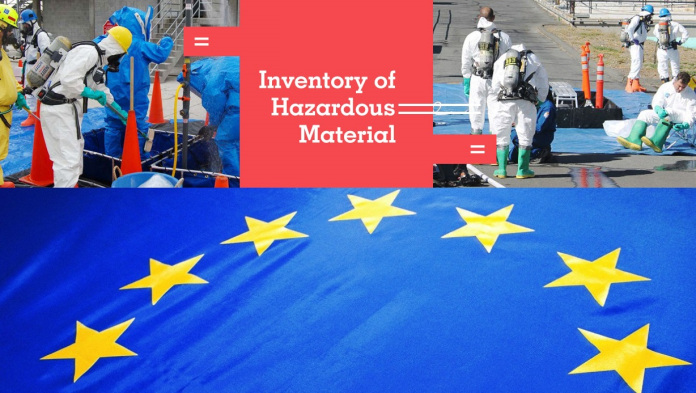Keeping Your IHM Up-to-Date: What Ship-Operators Must Know in 2025
November 5, 2025 Inventory of Hazardous Materials (IHM)
An effective and continuously maintained Inventory of Hazardous Materials (IHM) is no longer a “nice-to-have” but a core operational and environmental compliance tool for ship-owners and managers. With new regulatory milestones and amendments, it’s vital that vessels are not only certified but keep their IHM live and up to date. At ShipIP Ltd, we support you in both IHM initial certification and its ongoing maintenance through your vessel’s lifecycle.
1. Latest regulatory developments you should know
Amendment of International Maritime Organization (IMO) Guidelines: Resolution MEPC.405(83)
In August 2025 it was reported that IMO adopted MEPC.405(83) which amends the 2023 Guidelines for the development of IHMs. The key change: the threshold for the biocide cybutryne in anti-fouling systems has been lowered from 1,000 mg/kg to 200 mg/kg. Lloyd’s Register+1
Ships already holding an IHM must ensure that any new Material Declarations (MDs) prepared on or after 26 June 2025 reference the new format. Lloyd’s Register
HKC entry into force & IHM deadlines
The Hong Kong International Convention for the Safe and Environmentally Sound Recycling of Ships (HKC) comes into force 26 June 2025. Ships ≥ 500 GT must have on board an International Certificate on IHM (ICIHM) or Statement of Compliance not later than 26 June 2030 (or before going for recycling) DNV+1
Existing vessels must also ensure they maintain the IHM properly for their operational life. IIMS+1
Ongoing maintenance requirement
It’s emphasised that IHM Part I (hazardous materials in structure/equipment) must be kept up to date throughout the vessel’s operational life. Changes such as new installations/removals, hull coatings, equipment replacement must trigger updates. DNV+1
2. What this means for ship-owners & managers
-
Updating IHM documents: If your vessel’s IHM was developed under older guidelines, any new installations or coatings must reflect the new MD format (post-June 2025) and reduced thresholds (e.g., for cybutryne).
-
Assigning responsibilities: Designate an IHM Maintenance Responsible Person (sometimes called the IHM Designated Person) who ensures material declarations, supplier declarations of conformity (SDoCs) and revisions are captured and filed. DNV
-
Integrating into your SMS: Your Safety Management System should include IHM maintenance procedures—inspection of new items, record-keeping, revision control, and audit-trail readiness.
-
Audit & class-survey readiness: Recognised Organisations (ROs) or flag states will check that the IHM is current, that MDs/SDoCs are collected, that surveys are scheduled and that updates reflect any retrofit or modification works. Eagle.org
-
Environmental & recycling readiness: Having an updated IHM is key not just for operational compliance but for eventual ship recycling. Non-compliance may lead to restrictions or higher scrap-costs. Marine & Offshore
3. How ShipIP Ltd can help
At ShipIP Ltd, we provide a comprehensive IHM-maintenance support package:
-
IHM status audit: Review your vessel’s current IHM documentation, identify gaps relative to MEPC.405(83) and HKC requirements.
-
Update management: Assist in collecting new MDs/SDoCs for recent equipment/coatings, capture data for new thresholds (e.g., anti-fouling systems) and update IHM Part I accordingly.
-
Maintenance workflow: Provide procedures and templates for your IHM Designated Person to handle extensions, mods and replacements in an efficient manner.
-
Compliance tracking: Generate reports and checklists aligned with class and flag survey expectations to show you are compliant and audit-ready.
-
Training & awareness: Equip your officers and maintenance team with awareness about when the IHM must be updated, what triggers a revision and how to manage supplier documentation.
4. Quick-start checklist for your fleet
-
✅ Have you confirmed that all new anti-fouling coatings on your vessels (installed after 26 June 2025) comply with the cybutryne threshold of 200 mg/kg?
-
✅ Is your vessel’s IHM Part I documented with new MD/SDoC format as per MEPC.405(83)?
-
✅ Does your Safety Management System include a defined process for IHM updates triggered by equipment changes, coatings, structural changes?
-
✅ Has a responsible person been appointed for IHM maintenance and is the database of hazardous materials kept up to date?
-
✅ Are your records (MDs, SDoCs, sampling reports, IHM certificate) easily accessible for surveyors, PSC or recycling assessment?
-
✅ Do you have a roadmap for compliance with the HKC’s ICIHM requirements (especially if vessels ≥ 500 GT) and for expected recycling-phase documentation?
5. Final thoughts
In an era where environmental and safety compliance are increasingly audited and enforced, the IHM is not just a regulatory checkbox — it’s a living document that intersects vessel operations, maintenance, crew safety and end-of-life asset management.
By proactively managing IHM maintenance through ShipIP Ltd’s support, ship-owners and managers gain:
-
Reduced survey and PSC deficiency risk
-
Better control over hazardous-material inventory and supplier documentation
-
Enhanced preparedness for recycling or major modifications
-
Stronger environmental-compliance credentials







